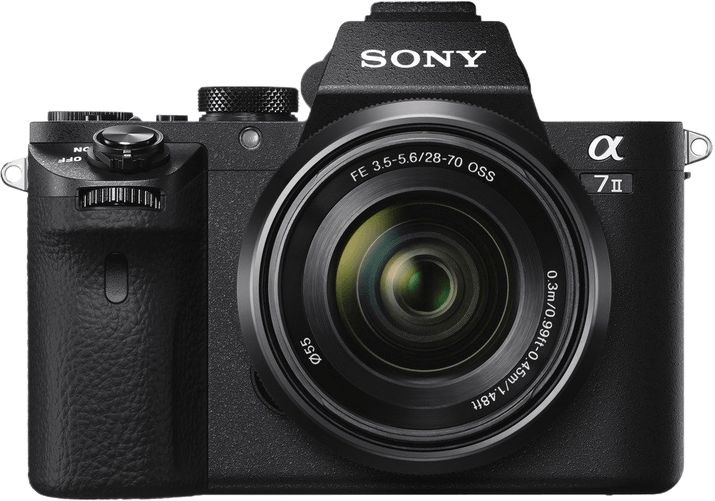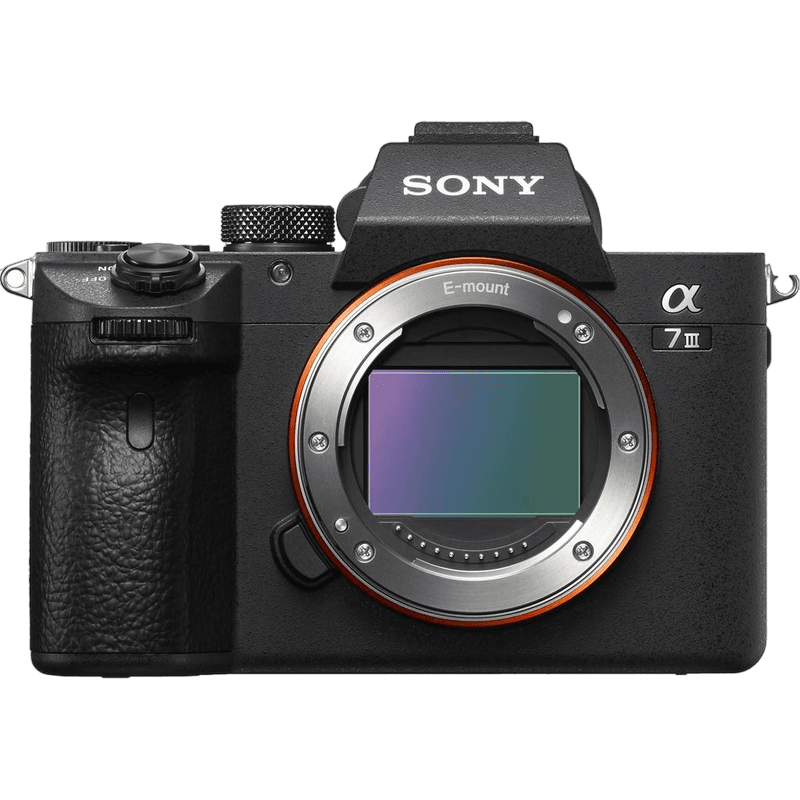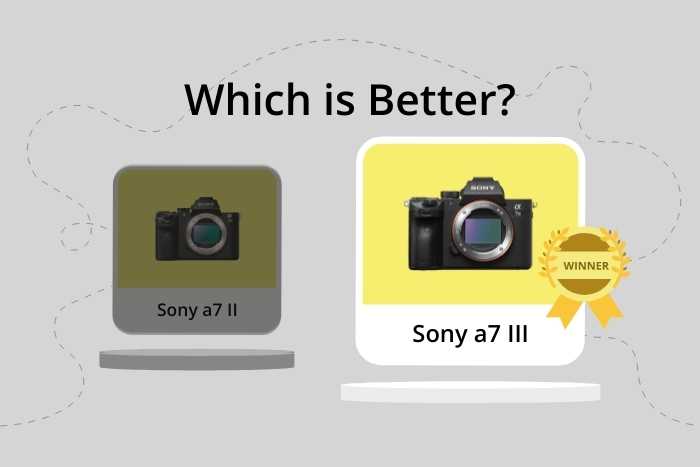Sony a7 II vs a7 III Comparison
Sony a7 II

Sony a7 III

The Sony a7 III emerges as the winner with a score of 81, while the Sony a7 II trails behind with a score of 68/100. Both cameras share common specifications as mirrorless cameras with identical dimensions (127 x 96mm), but the a7 III is slightly deeper at 74mm compared to the a7 II’s 60mm. Additionally, the a7 III is heavier, weighing 650g compared to the a7 II’s 599g.
The a7 III outshines the a7 II due to its improved performance, earning it a higher score. Released in 2018 with a launch price of $2000, it is a more advanced model than the a7 II, which debuted in 2014 at a price of $1600.
Despite its lower score, the a7 II has its merits, particularly in terms of affordability and a lighter weight, making it a viable option for those on a budget or seeking a more compact camera. However, the a7 III’s superior performance and enhanced features make it the better choice for those seeking a more powerful camera.
Sony a7 II vs a7 III Overview and Optics
The Sony a7 III wins the optics comparison with a score of 81/100, while the Sony a7 II scores 78/100. Both cameras share several specifications, including 24.2 megapixels, a CMOS sensor, the Bionz X processor, full-frame sensor size, and image stabilization. However, there are notable differences that contribute to the a7 III’s higher score.
One significant advantage of the Sony a7 III is its shooting speed. With a speed of 10 frames per second (fps), it doubles the a7 II’s 5 fps. This improvement allows for better action and sports photography, as well as capturing fast-moving subjects.
The a7 III also has a higher DXOMARK score for its sensor, at 96 compared to the a7 II’s 90. This difference indicates better overall image quality, dynamic range, and low-light performance. The Sony a7 III also features the Sony FE lens mount, which provides a wider range of lens options, allowing for greater versatility.
Despite its lower score, the Sony a7 II still offers solid performance in optics. Its 24.2-megapixel resolution, full-frame sensor, and image stabilization ensure quality images. However, it falls short in terms of shooting speed and sensor performance compared to the a7 III.
Comparing the optics of the Sony a7 II and a7 III, the a7 III emerges as the winner due to its faster shooting speed, better sensor performance, and wider lens compatibility. While the a7 II is a capable camera, the a7 III’s superior features make it the better choice for photographers seeking higher performance in optics.
Sony a7 II vs a7 III Video Performance
The Sony a7 III emerges as the winner in the video capabilities comparison. They share some similarities in video specifications, such as the maximum video frame rate. The Sony a7 II offers a maximum video frame rate of 60fps, while the Sony a7 III matches this with a maximum of 30fps. A closer examination of the specifications reveals the strengths and weaknesses of each camera in terms of video performance.
The Sony a7 III surpasses the Sony a7 II in terms of video resolution and dimensions. The a7 III boasts a 4K maximum video resolution, with video dimensions of 3840 x 2160. In contrast, the Sony a7 II only offers Full HD resolution, with video dimensions of 1920 x 1080. This difference in resolution and dimensions gives the Sony a7 III a clear advantage in video quality.
The Sony a7 II, however, has a higher maximum video frame rate than the Sony a7 III, offering 60fps compared to the a7 III’s 30fps. This means that the a7 II has the potential to provide smoother video playback, especially in scenes with fast-moving subjects.
Taking all of these factors into consideration, it is evident that the Sony a7 III is the superior camera when it comes to video capabilities, mainly due to its higher video resolution and dimensions. The Sony a7 II does have a higher maximum video frame rate, but this advantage is outweighed by the a7 III’s overall better video performance.
Sony a7 II vs a7 III Features and Benefits
The Sony a7 III emerges as the winner in the features comparison with a score of 81/100, while the Sony a7 II scores 57/100. Both cameras share several specifications, including a 3-inch screen size, flip screen, absence of GPS, and WIFI connectivity. However, the Sony a7 III outperforms the a7 II in specific aspects, making it the superior choice.
The Sony a7 III’s touchscreen capability enhances user experience, making it more convenient and efficient to navigate the camera’s settings. Additionally, the a7 III includes Bluetooth connectivity, enabling seamless file transfers and remote control over the camera. These features give the a7 III an advantage over the a7 II, contributing to its higher score.
On the other hand, the Sony a7 II has a higher screen resolution of 1,230,000 dots, compared to the a7 III’s 921,600 dots. This results in a sharper and more detailed display on the a7 II. However, this advantage is not significant enough to outweigh the a7 III’s additional features, leading to the a7 II’s lower overall score.
The Sony a7 III’s advanced features, such as touchscreen and Bluetooth connectivity, make it the better camera in terms of user experience and convenience. While the a7 II has a higher screen resolution, it lacks the additional features that give the a7 III a competitive edge. Therefore, the Sony a7 III is the superior option for those seeking a camera with more advanced and user-friendly features.
Sony a7 II vs a7 III Storage and Battery
The Sony a7 III outperforms the Sony a7 II in storage and battery. Both cameras accept SD/SDHC/SDXC and Memory Stick Duo/Pro Duo/Pro-HG Duo cards. However, the a7 III has two memory card slots, while the a7 II only has one, providing more storage flexibility.
In terms of battery life, the a7 III significantly surpasses the a7 II, offering 750 shots compared to the a7 II’s 350 shots. The a7 III uses the NP-FZ100 battery type, while the a7 II relies on the NP-FW50 battery.
Despite the a7 II’s lower score and battery life, it may still suit photographers who require less storage and power. However, the Sony a7 III’s superior storage and battery performance make it the better choice for photographers who need increased storage capacity and longer battery life.
Sony a7 II vs a7 III Alternatives
Still not ready to make a decision? Check out our other popular camera comparisons for inspiration:

